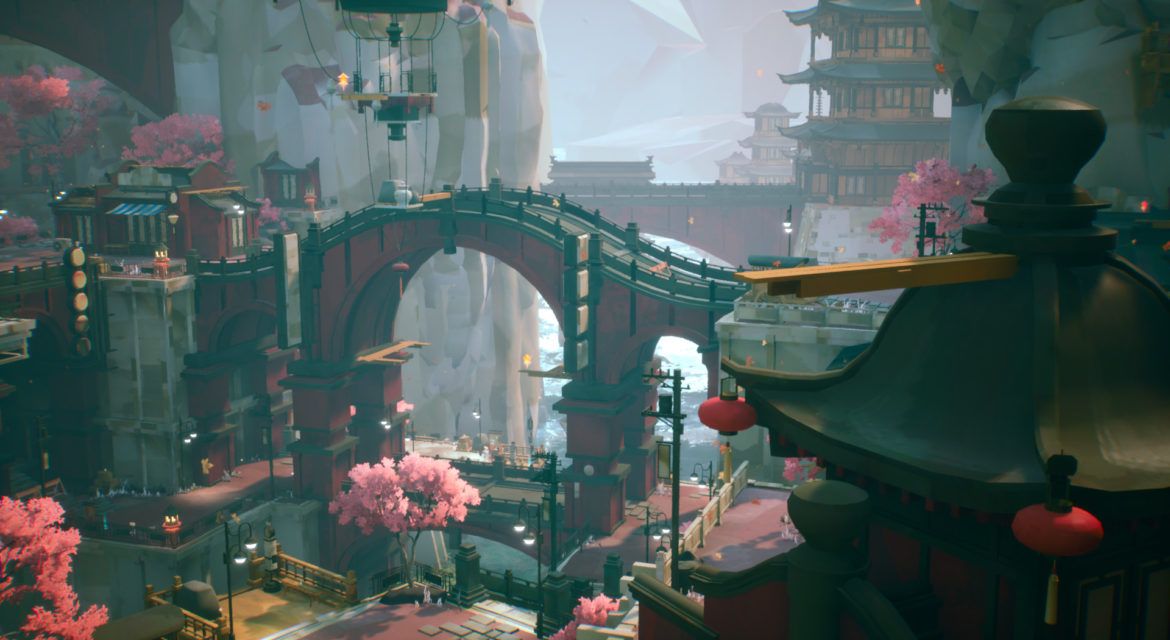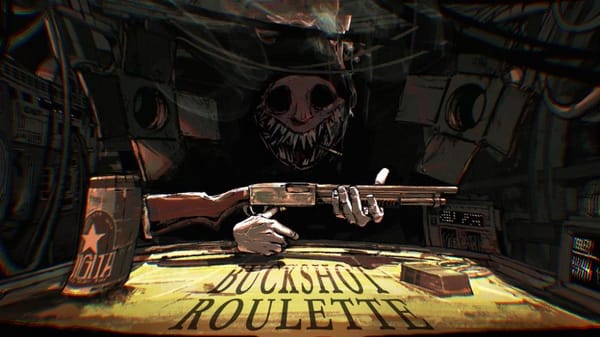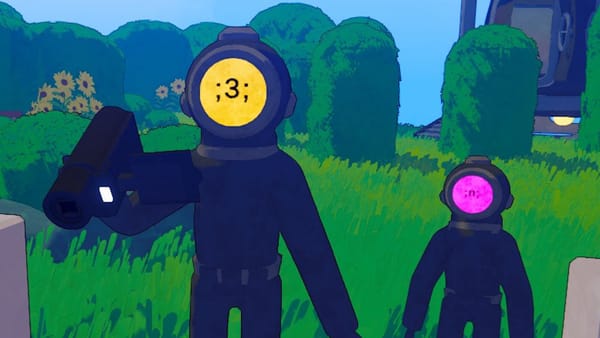Tasomachi: Behind the Twilight is Breath of the Mild

Written and hosted by Steve Heller
When I think of indie platformers, more often than not it’s the tough as nails 2D offerings. Dustforce is one of my favorites, I owe my career to the anger-inducing levels in Super Meat Boy, and more recently Celeste has cemented itself as the gold standard for the genre.
But now we’re in this weird nostalgia phase, where developers are calling back to the 90s with varying degrees of success. Blue Flame came out earlier this year, with slick combat and a gothic touch. Balan Wonderland is … well …. a thing. Now we have Tasomachi: Behind the Twilight, a stunning 3D exploration platformer from a solo developer who just so happened to be an artist on Xenoblade Chornicles 2, various Final Fantasy projects, and The Legend of Zelda: Breath of the Wild.
Tasomachi is an exploration-based 3D platformer, set in an absolutely stunning East-Asian inspired world. You play as Yukumo, a traveler who loses control of her airship when a mysterious force pulses through the world, covering the land in fog. Arriving at a mostly abandoned town Yukumo crosses paths with a member of the local Nezu Tribe; adorable cat-like creatures who are blighted by the mysterious force that has plunged their world into darkness. Thankfully there is a mutually beneficial solution to this problem; restoring power to the Source Trees of each town in the region, dissipating the fog, and freeing the villagers who can fix Yukumo’s airship. A convenient plot for sure, but it provides just enough of a reason to set the game in motion.
Tasomachi has three major villages to explore and much like the modern 3D Mario games, your progress is hindered by the need to collect Source of the Earth, powerful lanterns hidden throughout the villages in hard to reach places. Your job is to roll into each village, collect enough lanterns to unlock access to the Source Tree Sanctuary, complete a series of platforming challenges to restore life to the Source Tree, and dissipate the darkness. All up, you can expect to take a leisurely 4-5 hours to get through what Tasomachi has to offer.

When arriving at a village for the first time, darkness and barriers will surround you, keeping you confined to a certain part of the town. However, you are free to just roam, poke, and prod at the world as you search for lanterns. I immediately fell in love with the fact that there were no threats, no time limits, no enemies, and no death. It was just me, this gorgeous abandoned world, and the phenomenal soundtrack.
Once you have collected the required number of lanterns, you can unlock the Source Tree Sactuary which harbors a number of platforming challenges to be completed. Aside from the art, this is where I could really pull direct inspiration from Breath of the Wild. Each of these challenges just has the same vibe as one of the many Shrines in that game. Sure, less of the puzzle and physics elements, but it’s very much a “you’re in this space, make it to the end” kind of vibe, and I really enjoyed that.
Yet the beginning of Tasomachi is actually a little rough. Yukumo’s jump feels really floaty, yet doesn’t get as much height or distance as you want. The momentum of everything just feels a little … weird. Keeping in mind that I play a tonne of platformers, I’m used to precise and pixel perfect control, and Tasomachi definitely is not on that level. However, I won’t say that it is bad. The game is designed well to fit into Yukumo’s movements, and by the end of my time with the game, I felt just as comfortable here as I do playing the dark worlds in Super Meat Boy.
When you complete each challenge, and rekindle the power of the Source Tree, a portion of the fog is dissipated from the village. You can now access areas that you couldn’t before, but you’ll need to collect more lanterns, unlock the second Source Tree Sanctuary. Occasionally you will unlock new abilities such as a butt stomp, an air dash, and eventually a mid-air platform jump. Much like the aforementioned movement concerns, these powers all feel a little lackluster at first. Yet by the final challenges I was able to reliably combo air dashes and mid-jump platforms to increase my movement tenfold, so once again I wouldn’t necessarily say it’s bad, just not top tier.
As the darkness is completely lifted, the entire village is ready for exploration. The Nezu residents will return, new paths will be available, challenges will appear, and a general sense of accomplishment is immediately served up. I loved seeing life return to these places, and exploring the town I just helped to liberate became a zen-like experience for me.

From there it’s a rinse and repeat pattern. Collect enough lanterns to unlock the next village. Go to next village, lift the darkness by collecting lanterns and restoring the source trees. Explore the liberated village to collect more lanterns, and move on.
I’m not going to spoil the ending areas, but when all is said and done you do gain access to your airship, which allows you to then explore other areas of each village you were unable to before. Life has well and truly returned to each location by now, and I just cannot stress enough how chill the vibes were as I saw society return.
But perhaps the biggest issue with Tasomachi. It never breaks from its formula. Each village has two Sacred Trees to restore. Each village will have the same chores to complete in order to find all of the lanterns. Each village has a store that will sell you clothing and furniture for your home base. Each of the Nezu will say the same things to you, depending on which extra task they give you in order to get all the lanterns. It’s a very rinse and repeat game, and depending what you are looking for, that could be an issue for you.
Personally for me, Tasomachi is the exact game that I needed right now. A beautiful world, with a bare bones narrative, that just let me soak in the atmosphere and enjoy my time there. To give you an idea of what kind of world this is- you can sit. Literally just sit on the benches, and let time melt away. This a a stop and smell the roses game. A take your time and just collect the things game. This is Breath of the Mild, a time to relax.
But I also cannot discount the areas where it fails. It’s presentation is definitely lacking, with a menu and UI that just screams placeholder. The movement and weight of jumps and the powers don’t feel great. I learned to control them, and for what it’s worth I don’t think they’re as terrible as I thought in my first hour with the game, but they are certainly not great.

While I really believe that each village has its own quirks and vibe, the challenge areas are a little more hit and miss. Take for instance this maze. This just wasn’t fun. Neither was the guess the random teleporter challenge. Once again, not the worst thing I’ve seen, but also nowhere near the best.
That’s Tasomachi in a nutshell. I can see why people would bounce off it, saying that there are a dozen other platformers out there that do it better. But I don’t care. Tasomachi is doing something interesting here, creating a chilled collect-a-thon that calls back a hit of nostalgia, but takes the edge off at the same time. Also, this is made by a solo developer. Art. Design. Programming. Narrative. All one person. Taking that into consideration, this is a phenomenal debut.
But would I recommend Tasomachi? Maybe. If you are looking at this and can imagine yourself cozied up with a controller in hand, a cup of tea by your side, and just switch your brain off and enjoy the vibes, then I’d say this might have something for you.
It’s like Kraft Mac n Cheese. I know it’s not great, but I love it anyway. Tasomachi isn’t a bad game, it’s just not a phenomenal one. That’s totally okay, because I love it for what it is, 4-5 hours of platforming goodness, with nothing but good vibes.



